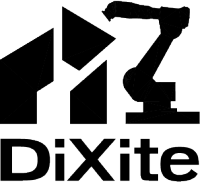Projet ANR ECOCIM
“Maquettes CIM pour l’éco-conception des quartiers”
Le projet a pour objectif de contribuer à l’amélioration des méthodes d’écoconception des quartiers, notamment via une approche conséquentielle, en utilisant les nouvelles opportunités offertes par le développement de maquettes CIM géo-localisées. Le consortium est composé des laboratoires suivants: Navier, LASTIG, EIVP, Armines.
Build’In+

l’Ecole des Ponts ParisTech a lancé en 2017 une plateforme technologique : la plateforme Build’in. Cette plateforme qui fait partie du Co-Innovation Lab des Ponts, est destinée à offrir un cadre spécifique pour des actions partenariales de Recherche et Développement ou de transfert technologique à destination des académiques, entreprises et différents acteurs économiques qui s’emploient ou s’emploieront à construire et maintenir la ville de demain grâce à des procédés numériques et automatisés, robotiisés. Cette plateforme dotée d’un premier niveau d’équipement de pointe et servie par les experts de l’Ecole des Ponts ParisTech dans les domaines de la conception et la mécanique des structures, la rationalisation de géométries complexes, la vision par ordinateur.
Build’In, vient d’être complétée par Build’In+ un dispositif de valorisation financé grâce à un AAP Sésame BPI , afin d’offrir une gamme de services pertinents au profit des différents acteurs de la filière BTP. L’ambition portée au travers du développement de cette plateforme serait d’influencer in-fine les orientations et la structuration de la filière BTP, au profit de l’intégration au sein de celle-ci de la révolution numérique.
DiXite project

Initiated in 2018, DiXite is part of I-SITE FUTURE, a French initiative to answer the challenges of the sustainable city. The DiXite project focuses on the construction site. It acts as a hub for developing pluridisciplinar research around construction scenarios in which automated and digitised processes are used to construct and maintain the city of tomorrow. the DiXite project is partnered with Navier, LIGM, LATTS and Lab’Urba Laboratories, CNRS, Ecole des Ponts ParisTech, ENSG, IFSTTAR, ESIEE Paris, EIVP, UPEM and EAVT. These institutions cover a wide range of expertise: structural engineering, computer science, humanities and social sciences, materials science, geophysics, architecture, positioning, robotics and control engineering. Industrial partners are also involved : CSTB, Vinci Construction, HAL Robotics and XtreeE.
How to automate one of the last low-qualification job sector without causing human problems, or developing new trades and new jobs? How do we shift indoor industrial technologies to the construction site? How do we build tomorrow’s sustainable habitat? The models and tools are available, there is convergence between industrial and academic interests, and demonstration prototypes will be produced
THINkSHELL
The THINkSHELL project was initiated by members of the “Architectured Materials and Structures” team of the laboratoire Navier, with fruitful collaborations with partners lab, as the laboratoire d’Analyse et de Mathématiques Appliquées (LAMA), the Laboratoire d’Informatique Gaspard Monge (LIGM) and the laboratoire Geometrie et Structure pour l’Architecture (GSA) from the School of Architecture Paris-Malaquais, the form-finding lab at Princeton University, the Block Research Group at ETH Zürich, many industrial partners: Arcora, Serge Ferrari, HAL Robotics, Lafarge, Simonin, Solutions Composites, T/E/S/S Ateliers d’Ingénierie, VIRY, Würth France, etc.
The THINkSHELL project encourages and accompanies expeditions in the field of structural engineering. It promotes an integrated vision of research, education and fabrication which embraces the whole design process from the very first sketches to the construction of full scale buildings, from material/assembly testings to the development of original numerical tools. The team gathered around the development of the first prototypes of elastic gridshells in composite materials. Nowadays, it combines expertise in the field of architecture, material science, structural engineering, historical buildings, architectural geometry and numerical fabrication.





